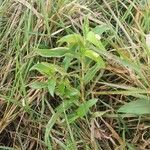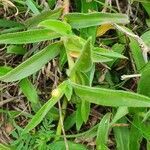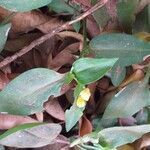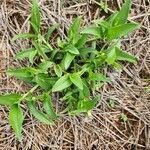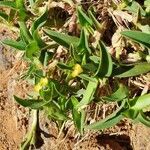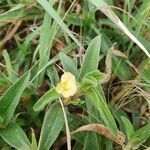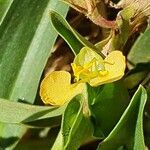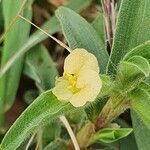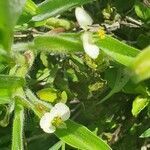Perennial herb, 0.15-0.50 m high; spreading, glabrous or pubescent. Leaves variable, oblong or linear, flat or folded, up to 120 mm long, margins smooth or crenulate. Spathe solitary, pedunculate, apex acute to acuminate, often falcate. Inflorescence of 2 well-developed cymes, hidden within spathe when young. Flowers: petals yellow. Ovary ellipsoid, with 5 ovules; stigma simple. Flowering time all year. Fruit an oblong capsule; dorsal locule indehiscent, 1-seeded or empty; ventral locules dehiscent, each with 2 ovules, lower ovule aborting.
A herb. The stems are fleshy and lie along the ground. The stems are 1 m long. They form roots at the nodes. The leaf stalks form a sheath around the stem. The leaves are small. The flower emerges from a pocket like spathe. The flowers are yellow to white.
Scrambling perennial to 50 cm from a woody rootstock. Leaves oblong to linear, sometimes hairy. Flowers yellow, spathes folded, dry inside.
